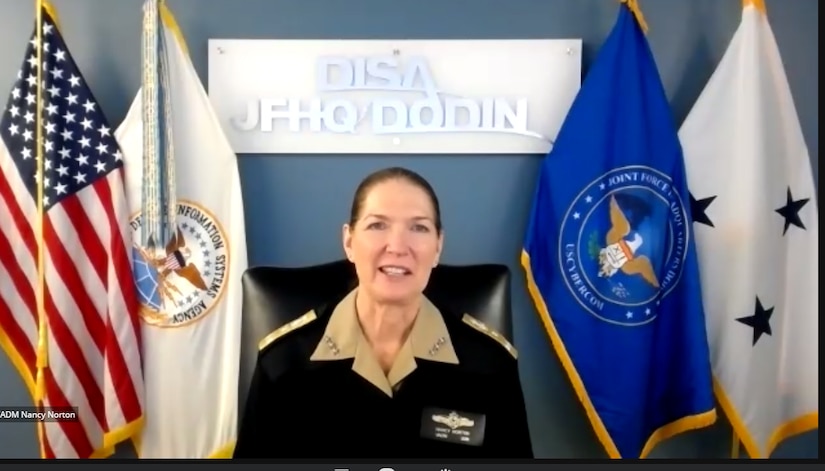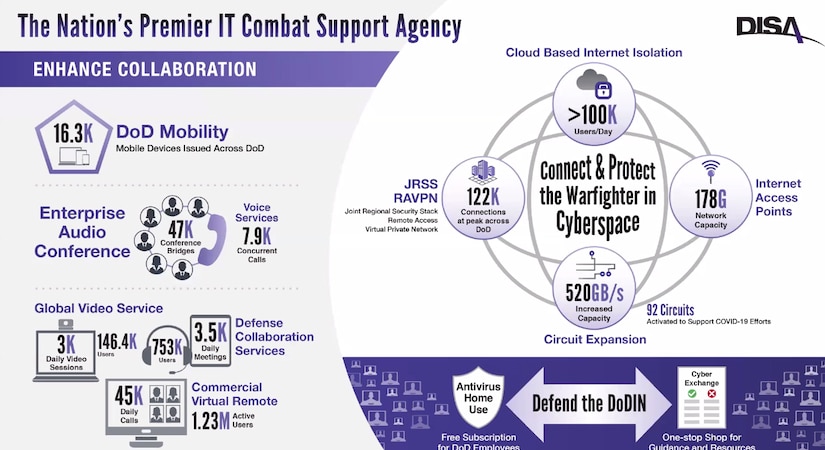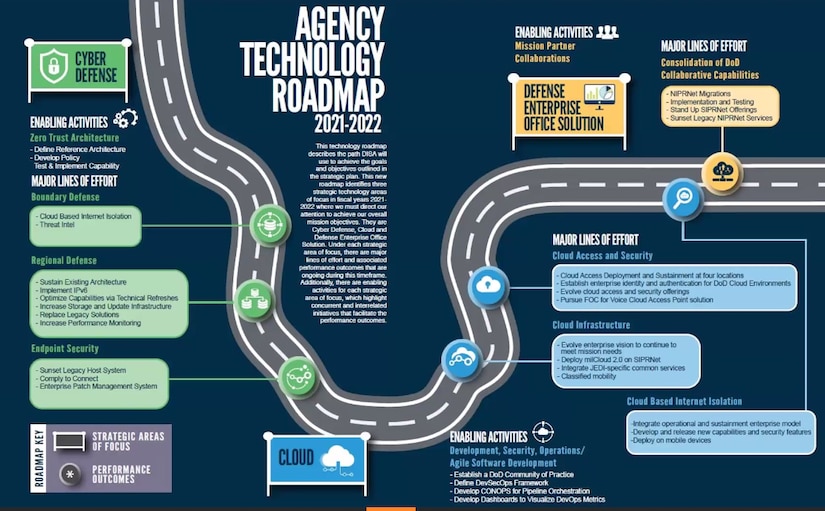Jan. 7, 2021 | , DOD News
The Defense Information Systems Agency and Joint Force Headquarters Department of Defense Information Network serve on the department's digital frontlines in cyber and information technology at all levels of classification.

Some 19,000 people around the world work in that agency to ensure secure and seamless communications for the warfighters.
"The safety of our employees is forefront in all of our decisions," Navy Vice Adm. Nancy A. Norton, DISA director, said at an AFCEA virtual luncheon today.

"Our primary goal is to preserve and protect the ability of our workforce to conduct mission central operations that we support on national defense and current worldwide military missions," she said. "We have not just survived through COVID-19, we have thrived. From the beginning of [the] pandemic, our workforce has enabled the Defense Department to accomplish its high-stakes missions, while maximizing remote work."
Over the last 10 months, DISA has been working on "cloud-based internet isolation," an initiative which pairs industry-leading technologies with a rapid-acquisition strategy, she said.

"CBII is proving to be a game-changing solution in our ability to protect department networks against web browser-based threats, making them more secure from the office or from home," Norton said.
It essentially creates a video stream of the browser, she explained. Malicious activities are isolated to the cloud, where they can more easily be contained and eliminated, rather than on personal computers and DOD networks. CBII also reduces bandwidth requirements through the very busy virtual private networks, or VPN.

VPNs were really put to the test in 2020, she said. In response to the pandemic, the "joint regional security stacks remote access virtual private network" enabled a more than 1,000% increase in telework connections for joint mission partners around the globe.
Fortunately, over the past few years, the department has made significant investments in its remote work capabilities. There are a number of tools available to the workforce that support team collaboration spaces conferencing and file sharing, Norton noted.

The COVID-19 emergency drove us to enhance our telework tools for our workforce, she said. Many service members, civilians and contractors didn't have government-furnished equipment, so they relied on commercial virtual remote, or CVR, using Microsoft Teams that enabled them to telework using their personal equipment.
"I don't think it's just DOD, I think the world has probably recognized the value of telework and the ease at which we can telework," she said. "And, as I said, we haven't just survived through the pandemic, we have thrived. So we have learned how to work with our workforce and trust our workforce in ways that we never did before. And I think this is something that, across the DOD, is going to continue."






No comments:
Post a Comment